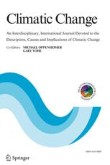|
Medicine by Alexandros G. Sfakianakis,Anapafseos 5 Agios Nikolaos 72100 Crete Greece,00302841026182,00306932607174,alsfakia@gmail.com,
Αρχειοθήκη ιστολογίου
-
►
2023
(272)
- ► Φεβρουαρίου (141)
- ► Ιανουαρίου (131)
-
►
2022
(2066)
- ► Δεκεμβρίου (80)
- ► Σεπτεμβρίου (170)
- ► Φεβρουαρίου (190)
- ► Ιανουαρίου (203)
-
►
2021
(7399)
- ► Δεκεμβρίου (186)
- ► Σεπτεμβρίου (472)
- ► Φεβρουαρίου (851)
-
▼
2020
(2517)
- ► Δεκεμβρίου (792)
-
▼
Νοεμβρίου
(1101)
-
▼
Νοε 19
(50)
- Radiation-induced cavernous malformation after ste...
- Solitary juxtacortical lesion associated with anti...
- Prehabilitation Programs Improve Exercise Capacity...
- Quality Versus Costs Related to Gastrointestinal S...
- Performing Omentectomy During Gastrectomy Does Not...
- Effectiveness of surgical fixation for rib fractur...
- Effects of model calibration on hydrological and w...
- Liver graft harbouring hydatid disease: how far ca...
- Warmer incubation temperature influences sea turtl...
- Gas aggregated Ag NPs as a matrix for small molecu...
- Hyperthermia, but not dehydration, alters the elec...
- Degenerative lumbar scoliosis patients with proxim...
- A Literature Review and Summary Recommendations of...
- High volume on line hemodiafiltration in dialysis ...
- Dielectric studies of polycrystalline bismuth tita...
- Active and Passive Exposure to Tobacco and e-Cigar...
- What are the symptoms of idiopathic intracranial h...
- Intracranial hypertension due to spinal cord tumor...
- Validity of the Japanese core outcome measures ind...
- Analytical solitary wave solution of dust ion acou...
- Investigation of the relationship of the number, l...
- Treatment Pattern and Outcomes in Newly Diagnosed ...
- Preparation of melamine–formaldehyde resin-microen...
- Preparation and characterization of PSF-TiO 2 hybr...
- Effects of socioeconomic status on cancer patient ...
- Functional genomic analyses uncover APOE -mediated...
- Right ventricular outflow tract obstruction caused...
- Perfusion in hand arthritis on dynamic contrast-en...
- The Effects of Very Low Energy Diets and Low Energ...
- Preparation of a ferroelectric composite film meta...
- Diagnosis and treatment of intramedullary osteoscl...
- Joint hemorrhage accelerates cartilage degeneratio...
- Abuse and Misuse of Pregabalin and Gabapentin: A S...
- The ground state of the lithium atom in dense plas...
- Validation of novel patient-centred juvenile idiop...
- EndoPil: A Magnetically Actuated Swallowable Capsu...
- Neck Muscle and Head/Neck Kinematic Responses Whil...
- Efficacy of Liraglutide to Prevent Weight Regain A...
- Modeling of Virtual Mechanical Circulatory Hemodyn...
- Urea entrapment in cellulose acetate microparticle...
- Overlapping Molecular Pathways Leading to Autism S...
- BDNF rs6265 Variant Alters Outcomes with Levodopa ...
- Green synthesis of CuFeS 2 nanoparticles using mim...
- Laparoscopic Greater Curvature Plication for the T...
- A Randomized, Controlled Trial Comparing the Impac...
- Antimicrobial Stewardship in the Intensive Care Un...
- Physical Activity, Medical Home, and Health Behavi...
- Seeking international consensus on approaches to p...
- Preoperative accelerated radiotherapy combined wit...
- Solitary extrapleural fibrous tumor with hepatic b...
-
▼
Νοε 19
(50)
- ► Σεπτεμβρίου (21)
- ► Φεβρουαρίου (28)
-
►
2019
(12076)
- ► Δεκεμβρίου (19)
- ► Σεπτεμβρίου (54)
- ► Φεβρουαρίου (4765)
- ► Ιανουαρίου (5155)
-
►
2018
(3144)
- ► Δεκεμβρίου (3144)
Ετικέτες
Πληροφορίες
Πέμπτη 19 Νοεμβρίου 2020
Radiation-induced cavernous malformation after stereotactic radiosurgery for cavernous sinus meningioma: a case report
Solitary juxtacortical lesion associated with anti-N-methyl-D-aspartate receptor encephalitis: a case report
|
Prehabilitation Programs Improve Exercise Capacity Before and After Surgery in Gastrointestinal Cancer Surgery Patients: A Meta-Analysis
|
Quality Versus Costs Related to Gastrointestinal Surgery: Disentangling the Value Proposition
|
Performing Omentectomy During Gastrectomy Does Not Improve Survival: a Multi-Center Analysis of 471 Patients with Gastric Adenocarcinoma
|
Effectiveness of surgical fixation for rib fractures in relation to its timing: a retrospective Japanese nationwide study
|
Effects of model calibration on hydrological and water resources management simulations under climate change in a semi-arid watershed
|
Liver graft harbouring hydatid disease: how far can we extend our donor pool?
|
Warmer incubation temperature influences sea turtle survival and nullifies the benefit of a female-biased sex ratio
|
Gas aggregated Ag NPs as a matrix for small molecules: a study on natural amino acids
|
Hyperthermia, but not dehydration, alters the electrical activity of the brain
|
Αναζήτηση αυτού του ιστολογίου
! # Ola via Alexandros G.Sfakianakis on Inoreader
-
Does CBD Oil Lower Blood Pressure? This article was originally published at SundayScaries." Madeline Taylor POSTED ON January 13, 20...
-
Abstract Purpose Clinicians must balance the risks from hypotension with the potential adverse effects of vasopressors. Experts have rec...






